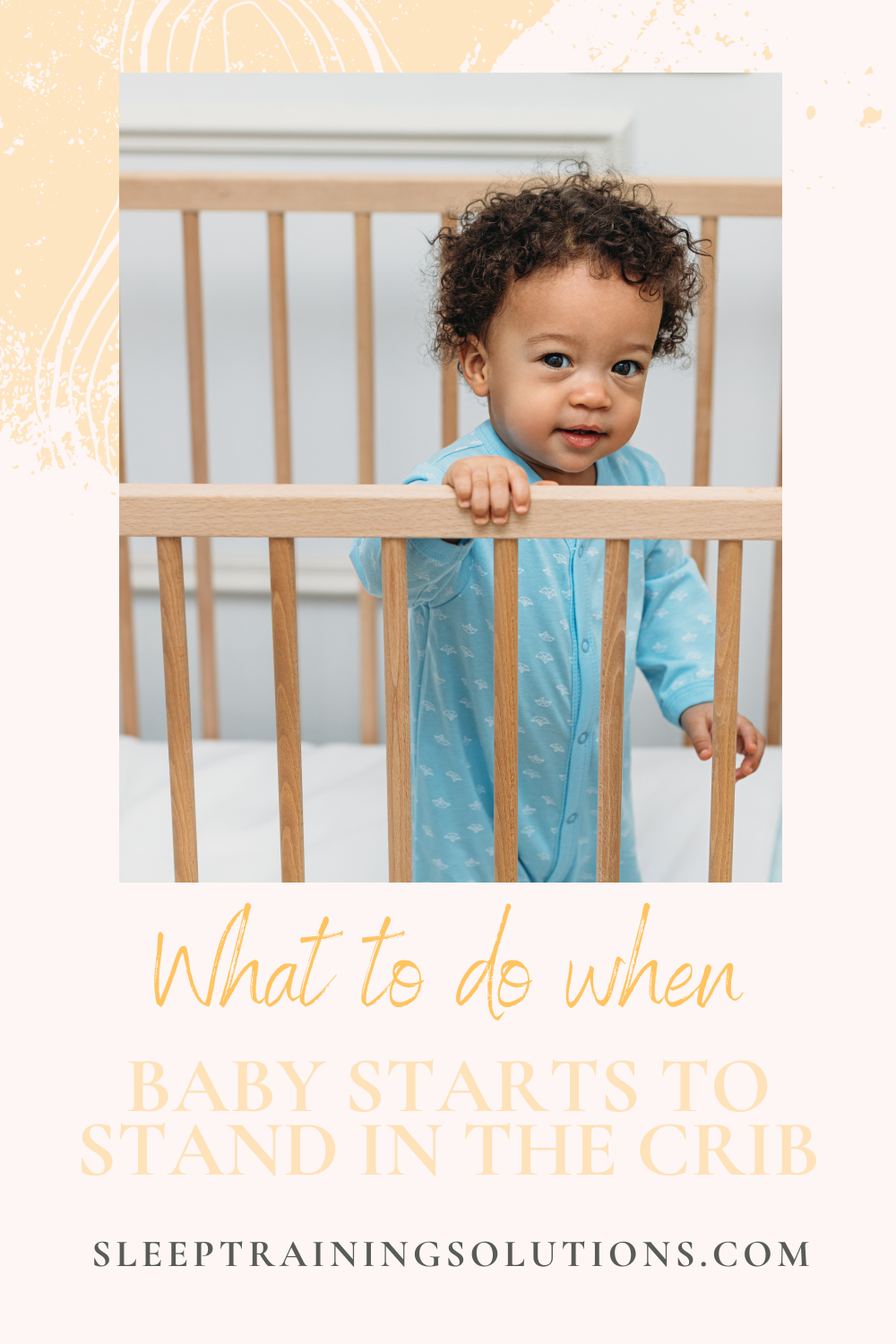5 things to do when baby starts standing in the crib
Is your baby starting to stand in the crib?
Babies typically learn how to stand sometime in the 7-12 month range. It’s so fun seeing them cruise around coffee tables and smile…less fun when they’re standing in the crib at 3am, stuck and can’t get down! Here are 5 things to do when baby starts standing in the crib.
What to do when your child starts standing in the crib
Lower the mattress
As soon as your child starts sitting you should lower the mattress, because you never know how quickly that new milestone of sitting will turn into standing!An empty crib
No toys, books, bumpers, blankets, stuffed animals, pillows or bottles in the crib! Remember that the current recommend is no loveys or blankets until one year of age.As for the toys and books, you want your baby to sleep in the crib, not play. It’s pretty confusing if sometimes you expect baby to sleep when you lay her down and other times she’s allowed to play in the crib!
And no bottles! The bedtime routine for babies should include a feed but it’s concluded once you lay her down in the crib.
Use a sleep sack
When a baby is in a sleep sack, it can be harder to stand up, so having them in one can buy you some time. Once they figure out how to navigate wearing it and getting to standing, it can help deter many kids from eventually climbing out of the crib.Practice how to go when standing to sitting with your baby
This is so important to do during most awake times between naps! You want your baby to practice standing, but more importantly going from standing to sitting so they don’t get stuck standing in the middle of the night. This playtime activity can be helpful to teach your baby how to go from standing to sitting.Be consistent
Until your baby masters lowering to the floor/mattress while standing, you’ll want to keep your response consistent. If your baby gets stuck standing, you can go in and help her down and pat the mattress with little to no interaction. You want to make sure every time this happens, you do the same thing. As you practice this new skill with your baby and have the same response when they get stuck, you’ll get past this stage more quickly!
Baby standing up in crib
Related Posts:
This post is for informational purposes only and may not be the best fit for you, your child and/or your personal situation. It shall not be construed as medical advice. The information and education provided here is not intended or implied to supplement or replace professional medical treatment, advice, and/or diagnosis. Always check with your child’s physician or medical professional before trying or implementing any information read here.





